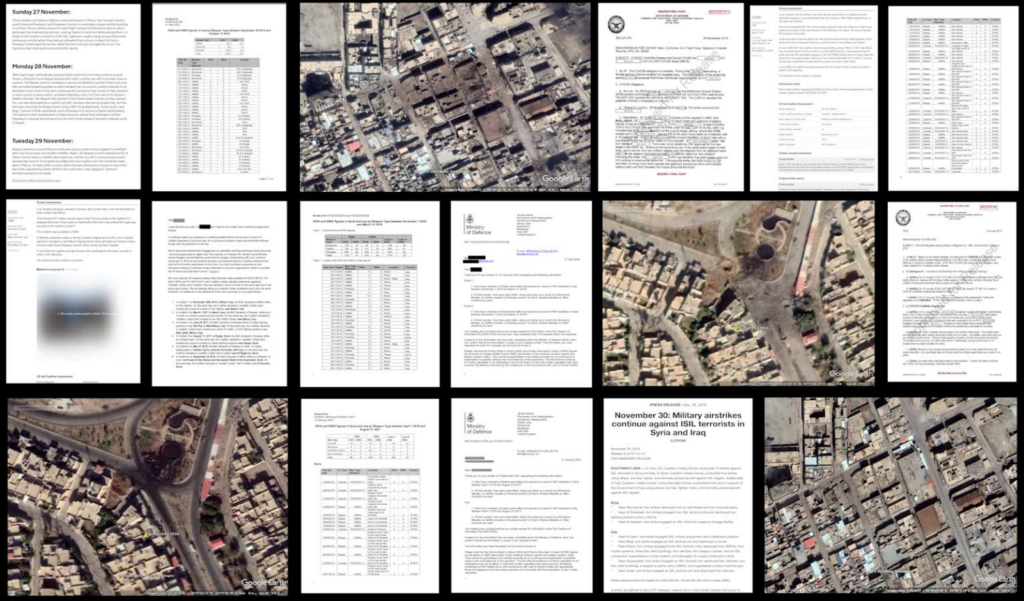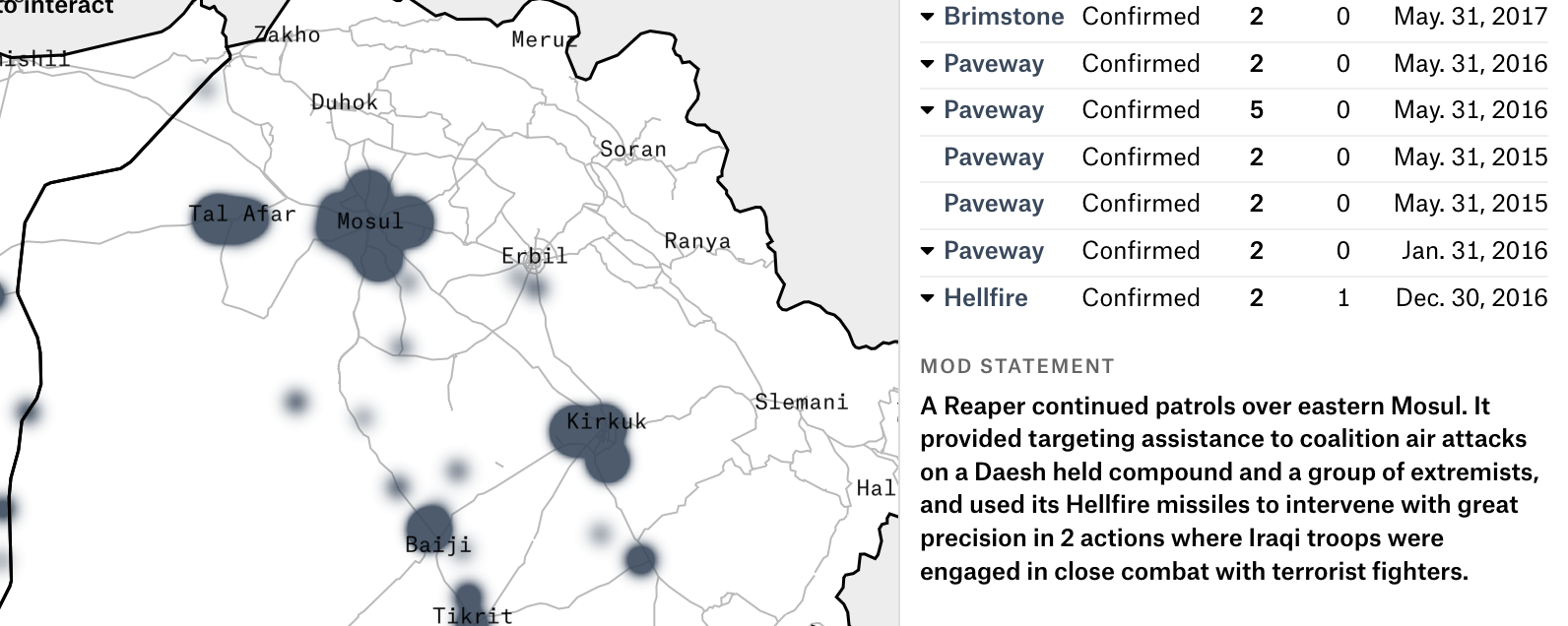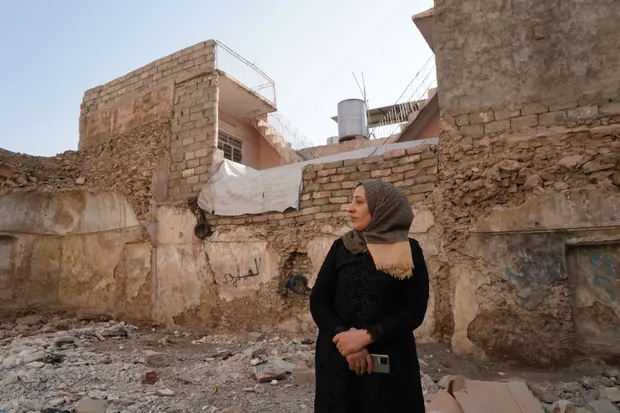In eight years of war, the UK only admitted killing one civilian. The Guardian and Airwars went in search of the forgotten victims

A new Airwars and The Guardian investigation has identified dozens of Iraqi and Syrian civilians killed by likely UK airstrikes, as part of a widespread package picking apart the British claim to have fought a near victimless eight-year war.
Since 2014, the UK has dropped more than 4,000 munitions in the war against the so-called Islamic State. It claims that those strikes have killed more than 4,000 ISIS militants, but has only accepted responsibility for the death of one civilian.
Over more than a year, Airwars and The Guardian trawled through thousands of previously classified documents to discover civilian harm incidents linked to UK airstrikes. In total the research identified at least eight incidents in which the Coalition accepts civilians were killed and that appear to be British strikes. In these incidents at least 32 civilians died.
Read the full package:
Long-held suspicions, new investigative techniques
Since 2014, the Global Coalition Against Daesh has carried out thousands of airstrikes in Iraq and Syria. The overall Coalition has accepted that its actions have led to at least 1,437 civilian deaths. These numbers pale in comparison to estimates of local Syrian and Iraqi communities, as well as estimates from international organisations like Airwars – which has tracked a minimum of 8,197 likely civilian deaths. But the public recognition by the Coalition was a welcome improvement from previous conflicts when civilian harm figures were not even tracked.
The acceptance of civilian harm was always in the name of the Coalition, with the individual member state that conducted the strike not named. After significant pressure from politicians and civil society, the United States, the Netherlands and Australia chose to identify which of the strikes in which the 1,437 civilians were killed they conducted.
The UK – along with other nations such as France and Belgium – has instead hidden behind the anonymity of the Coalition – refusing to say whether it was British aircraft that dropped the munitions. The UK claims to have the same post-strike review processes in place that the US does, but has accepted only a single civilian death – in a drone strike in Syria in March 2018.
Politicians, campaigners and civil society groups have consistently raised concerns about the UK’s lack of civilian harm monitoring and accountability. Since ISIS lost the last of its territory in 2019, other nations have sought to learn the lessons of the campaign.
The Netherlands has paid millions in compensation to victims of its strikes, while the United States has launched major policy reforms to learn the lessons of the campaign for protection of civilians. The UK remains an outlier, claiming it had robust mechanisms for monitoring the impact of its strikes – including post strike battle damage assessments – and refusing to review its policies.
In 2021 the Airwars Investigations Unit began working to identify the civilian harm the UK Ministry of Defence refuses to accept.
It was clear that many strikes in which the Coalition had accepted civilians were killed would involved the UK, the second largest contributer to the air campaign behind the US. Through a series of Freedom of Information Requests, Airwars first obtained records of every UK strike in which the MoD claims a militant was killed – more than 1,000 strikes in which more than 4,000 militants were allegedly killed. We mapped them out alongside the corresponding British statements from the day – highlighting the relevant section of the statement.

Airwars mapped out each UK airstrike that killed a militant and matched it to the corresponding UK statement from the day
We then compared these to Coalition civilian harm reports, Airwars’ public records and crucially to the 1,300 internal Coalition civilian harm assessments released to The New York Times in December 2021.
These assessments are the internal documents explaining how they determined whether or not civilian harm was caused from a strike. Some are only a page or two long, but others run to dozens of pages and even include chat logs between drone operators about what they saw. While key details – such as the country that conducted the strike – were redacted, they contained vital details about what the specific target was – allowing Airwars researchers to painstakingly match them up to UK statements.
Initially the research identified 41 cases in which all key details matched. Each one then went through an individual review process, with multiple researchers grading each incident on a 1-5 confidence scale. In total eight incidents were identified where all key details from the UK statements – including date, location, target and sometimes munition – matched the Coalition civilian harm assessment.
These eight were sent to the Ministry of Defence in July 2022, including a spreadsheet of all our evidence. The ministry declined to review the evidence in detail or discuss individual cases, but a spokesman said:
“The MOD examines all the evidence available to us, including a comprehensive assessment of all available mission data, and [has] seen nothing that indicates civilian casualties were caused.
We have sought to discuss the findings multiple times with MoD officials in the months since, without success.
In November 2022, Airwars and The Guardian travelled to Mosul in Iraq looking for the victims of these strikes.
We found a city still devastated by the lasting impact of war – with whole neighbourhoods seemingly having seen almost no reconstruction efforts five years after ISIS was forced out. Almost every resident we spoke to had lost a loved war in the conflict – whether by ISIS brutality, Iraqi ground forces indiscriminate use of heavy weapons, or Coalition airstrikes.
We found two families killed in strikes we believe to be British, whose full stories can be read in The Guardian’s feature article. Badour Nazim Abdulrahman lost nearly her entire family in a likely British strike – including her parents and five other family members.

Badour surveys the destroyed family home in the al-Nabi Sheet area of Mosul. Photograph: Ismael Adnan/The Guardian
“By the time Badour was able to collect the remains of her family, when fighting died down several months later, there was nothing left in their home but bones. “My family is mixed with this soil,” she said, walking around the ruined site.
Badour comes to the cemetery to visit the grave of her family often, because for her, life stopped the day the coalition bomb killed them. She and her husband have not been able to have children of their own, and they cannot afford fertility treatment.
“I used to go visit my family every Thursday,” she said, weeping by their collective grave. “I go to see them still, but in the graveyard. I am lost. I can’t sleep for days at a time, thinking of them.”
She dreams of medical care that could help her start a new family to fill her days and carry the legacy and memories of all those she has lost.”
To date the UK has not publicly compensated a single civilian victim of its bombing campaign in Iraq and Syria.
The UK remains militarily active in Iraq and Syria – and the levels of secrecy around its campaign persist. As recently as December 2022, the UK carried out a strike on a militant who was allegedly involved in activity around biological and chemical weapons, in al-Bab, northern Syria. Local media reported allegations of civilian harm almost immediately after the strike, with at least two civilians reportedly injured. Airwars alerted an official within the MoD to this incident in January, and has been seeking to identify a formal mechanism to submit such allegations. The ministry has yet to provide clarity on this procedure.